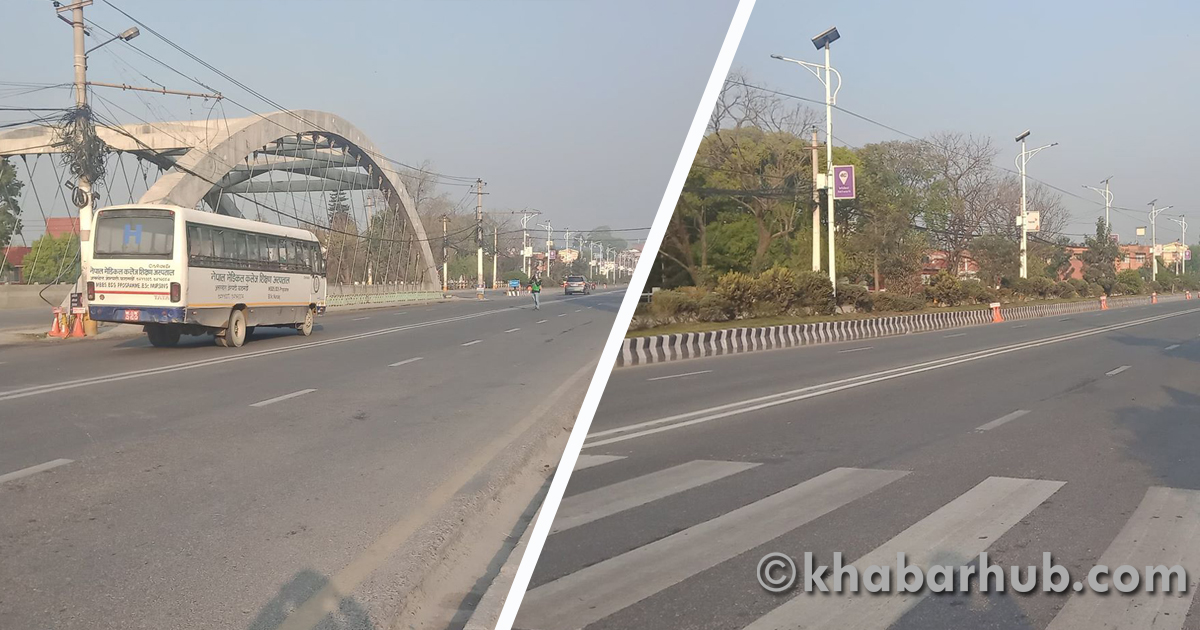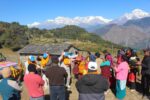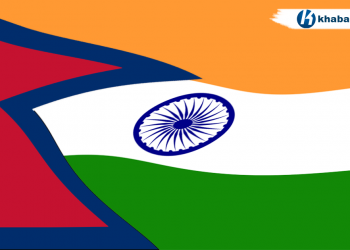KATHMANDU: With the coronavirus spreading in 198 countries and territories and 1 international conveyance, people have started wondering about the good practices in the combat against this pandemic.
As of March 26. there have been 468,905 cases of its infection in which 114, 218 have already recovered. Among the 333,487 active cases 318,695 (96%) are in mild condition which means only 4% are in serious or critical condition.
The death toll so far has become 21,200. China which has the highest number of affected so far (81,285) has got the highest number of recovered(74,051).
It has 3,947 active cases and 1,235 active cases so far. There are few factors behind China’s success behind the war against COVID-19.
China which seemed ‘notoriously’ strict against the whistleblower doctor at first, declared a War against the pandemic when it started spreading. The dragon country treated the disease as real enemy both in words and deeds.
Though a bit slow to response in the beginning (when China declared lock-down in Wuhan the city of origin in this case, millions of people had already left the city as human carrier of the virus), the regime took tough measures against it.
Everyone was kept in quarantine, personal freedom was sanctioned. The town came to a standstill.
China came strictly against those who disobeyed the decree echoing home confinement. Smart phones, which have become integral part of lives, were used to trace quarantined and the ones in isolation. Anyone stammering against it got severely punished.
Medically, China issued decrees for hand wash, tested various types drugs used for virus treatment and deployed all medical workers as in warlike situation.
Military showed the example of fastest work establishing thousands of well equipped hospitals in a short time span. Accept it or not, the regime was in the best team-spirit in this battle.
Singapore was among the first places outside China to experience the virus explosion. The first recorded case in Singapore was on January 23, the day Chinese authorities locked down the city of Wuhan.
In the beginning, Singapore was the country with second highest number of corona cases. Naturally, large part of Chinese travelers suspicious of their health status in Wuhan had chosen Singapore as the place to celebrate Lunar New Year.
But this country of 5.8 million population successfully traced, tracked and curbed the outbreak in a timely manner.
Temperature screening at the airport, entrances of office buildings, schools and workplaces was rolled out so rapidly that the disease hardly got chance to play in the densely populated cities of Singapore.
It steadfastly traced and tested suspected cases, put all close contacts of a confirmed case under home quarantine, designed the clusters of infection and then made this information transparent and accessible to the public.
Unlike in China, where information is often said to be manipulated by the authority, transparency was ensured on all occasion.
The confirmed cases have their age, gender, address and places they visited listed on Singapore’s Ministry of Health’s website.
Prime Minister Lee Hsien Loong and a special ministerial task force focused on Covid-19 frequently share videos and social media updates about their interventions, explaining any new risks and reassuring people that they are prepared, that citizens do not have to stockpile or plan for a lockdown, and to only buy what they need.
The measures were so effective that the local transmission rate fell dramatically to 5-15 cases for some time finally making it nil. There have been just 631 cases of infection in the country held highly vulnerable for its proximity to China.
Singapore’s aggressive response is highly applauded world-wide. The World Health Organization (WHO) praised Singapore’s modality as “all of society, all-government approach.”
Now when the Europe, America and most nations of Asia are panicked and have clamped down borders, canceled events, and closed offices, restaurants and other public spaces, the Singapore government has managed to maintain a strong sense of normalcy amid the pandemic.
Large gatherings, senior-centric activities and after-school events may be canceled and social-distancing regulations limiting seating are in effect, but people still go out to movies and restaurants. Some firms might ask their Singaporean employees to work from home, but many workers still go to their offices every day. The government has reminded us to only wear masks if we are unwell.
Singaporean approach of keeping a lid on community transmission without relying on broad testing was to focus on vulnerable populations and those who were ill, so that hospitals are not overwhelmed by suspected cases can be a best model for many countries which have low- bed capacity in hospital.
Bhutan, another Asian country is also hailed for its strict and effective measures against COVID-19.
A landlocked kingdom of South Asia was alarmed of the threat at finding a COVID-19 suspect American tourist who had entered the country from India.
When the corona case was identified, the regime worked day and night to find out the total people who had come into contact with the tourist. In a short time 90 people were quarantined and the infection rate has gone very low. It has only 2 cases so far and no death from this disease.
Well-equipped in many ways the developed world of Europe turned the worst target of COVID-19, for various reasons. To mention few, they underestimated the hazards of this epidemic could cause worldwide.
When China was fighting against it quite inexperienced, Europe and America confined itself on data counting and the human rights issues the emergency situation made mandatory for the victim country. Despite having better technology and health services ignoring the toll on time turned fatal for them.
The greetings and gatherings of the Westerners turned catalytic in spreading the disease. The ‘social distancing’ and changed way of greetings are not easy for them.
Life has become difficult due to this culture. High number of vulnerable population became a serious challenge to them. The heart-rending news about the old ones dying in isolation and their anonymous burial without much family ritual is indescribable.
The silver line in this pandemic is, I hope, the realization about the real threats to humanity and civilization.
It’s high time for the world that has spent billions of dollars in equipping themselves with arms of destruction to come to fight for humanity.
Using the technology, human resource and experience so far let’s stand together to fight against this pandemic.









Comment